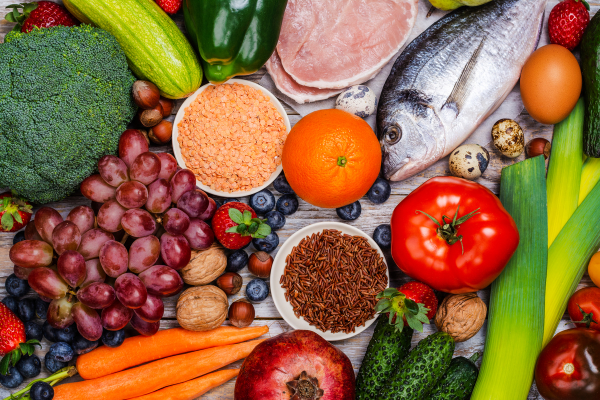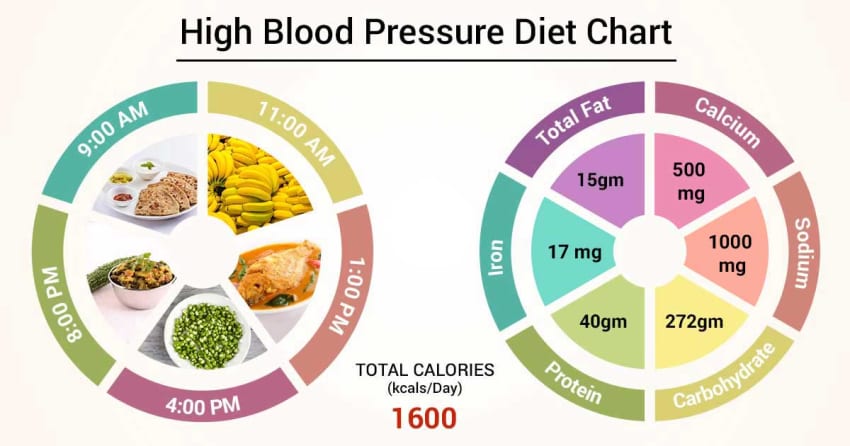
It is important to start young and lead a healthy lifestyle. Children learn about the importance of eating well and physical activity, and as they grow they become more aware of the benefits of eating healthily. Although it can seem difficult to maintain a healthy diet, there are many studies that show that balanced eating includes all important food groups. This includes plenty fruits and vegetables, whole grain, and protein. Healthy lifestyles include a healthy weight and regular exercise.
Individuals with disabilities created the Healthy Lifestyles program. As more people learn how to live healthier lives, this holistic approach to health continues to evolve. Participants will receive a Health Life Curriculum as well as a Leader's Guide to help them live a healthy lifestyle. Six follow-up meetings are included in the workshop. These meetings allow participants to discuss their progress towards their personal goals and share strategies, resources, and successes. They also learn how to maintain healthy eating habits and lifestyles.

The program includes three components: advocacy, education, clinical care. Teachers are required to take the Lead Healthy Lifestyles Leader certification workshop during the first phase. The training also includes the simulation of a workshop. The workshop provides the opportunity for the trainees to gain experience with the curriculum and philosophy. Leaders take part in a 1-day Leadership Training event to further their knowledge on the Healthy Lifestyles curriculum.
The programme is multi-phased, spans three school term and focuses primarily on a healthy lifestyle. It encourages physical activity as well as energy balance. The piloting phase is designed to build relationships with children and increase awareness about the program. The final phase allows children to begin to use the Healthy Lifestyles principles every day of their lives. There are many aspects that go into a healthy lifestyle. So make sure to plan your steps.
The second phase is the Creating a Supportive Environment. This phase will raise awareness and build relationships between parents and children about HeLP. At the school, professional dancers and sportspeople talk to the children about healthy lifestyles and run practical workshops. They are role models and can change the school culture. You can live a healthy lifestyle by eating healthy and engaging in physical activity. If you have a healthy lifestyle, you can improve your health.

A healthy lifestyle is more than just eating healthy foods. An effective lifestyle requires regular exercise and a healthy eating plan. It is important to include healthy foods as part of your nutrition plan. Foods rich in vitamins or minerals can be eaten. Healthy foods will improve your body's ability to function. Furthermore, you can consume less fatty food.
FAQ
Do Men Need A Gym Membership?
For men, a gym membership is not required. You will get more value for your money if you join the gym.
Many gyms offer free trials that let you try the facilities before you pay any fees.
The gym is free to use whenever you wish, and there are no fees. You can cancel your membership as soon as you decide whether you love or hate it.
Which is the best workout for men?
It depends on what you're looking for. Cardio workouts can help you lose weight faster than strength training.
However, strength training can be beneficial if you only want to build muscle mass. It increases lean mass.
Both types are good for improving your overall health.
If you're looking to get fit fast, I recommend doing HIIT or sprint interval training. This type of training can help you lose fat quickly and increase your metabolism. It can also increase your endurance, so that you can train even when fatigued.
Is Cardio Exercise Good Or Bad For Your Health?
Cardiovascular exercise can have many benefits. It increases blood circulation, strengthens the heart muscle, boosts stamina, aids in weight loss, and gives you more energy.
Cardiovascular exercise includes running, biking, hiking, swimming, tennis, basketball, soccer, volleyball, football, etc.
It is important that cardio exercises are not performed at high intensities. Doing this could lead to injury.
Cardiovascular exercise should be done only if you feel well.
Never push yourself past your limits. This could lead to injury.
It is important to warm up before you begin any cardiovascular exercise. Gradually increase the intensity.
Listen to your body. If you feel pain when doing cardiovascular exercise, you should immediately stop.
After a cardiovascular training session, it is recommended that you take some time to relax. This allows your muscles time to recover.
Cardiovascular exercise is an important part of losing weight.
It is the most efficient way to lose weight and stomach fat.
How quickly can I transform the body of my child?
It all starts by changing your mindset. First, you must decide to make a change.
Once you have decided you want to make changes, you will need to commit to your fitness goals at least for 3 months.
Then, find a program to fit your life.
Also, you need to set realistic goals. You shouldn't waste money on a gym membership that doesn't allow you to put in the effort and time required to reach your goals.
Instead, make use of your time outdoors.
If you spend an hour a day walking around the block, you'll burn enough calories to lose 1 lb per week.
Once you know what your plan is, it's time to start organizing your life in accordance with this plan.
It is important to set aside time every day for exercise before going to work. You can also take breaks throughout each day to get up and move.
You should also reward yourself for reaching milestones. This could include buying clothes or accessories that reflect your success.
Statistics
- Get free shipping and 25% off today. (healthline.com)
- According to the American Academy of Dermatology (AAD), men over 50 are at a heightened risk of developing it. (healthline.com)
- Cardmembers earn 5% Back at Amazon.com with a Prime Credit Card. (amazon.com)
- Are You One of the 20% of Guys (mh.co.za)
- 10 pounds in a month is likely during a lean bulking phase, especially for beginners. (muscleandstrength.com)
External Links
How To
How can I burn fat and exercise?
Exercise helps you lose calories by increasing your metabolism and oxygen intake.
If you exercise with moderate intensity, you can safely lose weight.
To burn fat while exercising, follow these tips:
-
Cardio exercises like walking, running (or jogging), swimming, cycling, running, and/or elliptical training are all good options.
-
Exercise for 30 minutes three times per week.
-
Strength training is a great way to lose weight.
-
Avoid intense workouts. You can build muscle and not break down muscle tissue.
-
Drink plenty of water during exercise. Water flushes out toxins, and keeps your body properly hydrated.
-
After working out, make sure to drink low-fat proteins shakes. Protein shakes repair muscles and increase energy.
-
Smaller meals are better for you.
-
Don't skip breakfast! You can feel tired and slow if you skip breakfast.
-
Take care of your mind. Stressful situations can slow your metabolism.
-
Keep a positive attitude. Studies show that overweight people are more likely to be obese than those who perceive themselves as attractive.
-
Get enough sleep. You will have a harder time losing weight if you do not get enough sleep.
-
Stay active. Get up every hour and get moving.
-
Maintain a healthy diet. Eating right keeps you feeling full and satisfied longer.
-
Relaxation is possible by finding ways to relax. An anxious mind won't allow your body release stress hormones, which can lead to the destruction of muscle tissue.
A balanced diet will provide all nutrients that are necessary for growth.
Consider eating six small meals daily instead of three big ones. This allows your body to properly digest what you have eaten.
Calcium is required to support strong bones. Calcium is available in dairy products like milk, yogurt, fortified soy beverages, orange juice, cereal, bread, and cereals.
Calcium comes from leafy green vegetables, beans, tofu, nuts, seeds, and cheese.
Vitamin D is necessary for the body to absorb calcium. Vitamin D can also be found in some fortified foods such as eggs, fish, and yolk.
Vitamin E is crucial for skin health. It can be found as a vegetable oil, wheat germ, peanuts or almonds.
Your body needs zinc for normal immunity function and wound healing. Zinc can be found as a mineral in oysters.
Zinc deficiency can cause fatigue and loss of appetite. It can also lead to depression and impaired immunity.
Eating too much sugar causes insulin resistance, which increases blood glucose levels. Insulin resistance can lead to weight gain.
High levels of free radicals can lead to insulin resistance. Free radicals are molecules containing unpaired electrons which cause damage to cells membranes.
Food additives, pesticides and herbicides, as well as preservatives, smoking and radiation are all sources of free radicals.
Free radical damage may lead to cancer, heart disease diabetes, arthritis, asthma and other conditions.
A well-balanced diet rich in antioxidants is the best way for you to avoid free radical damage. Antioxidants protect against oxidative damage.
Vitamin C, beta carotene (found within citrus fruits, carrots, sweet potatoes and spinach), Vitamin E (found inside nuts, olive oils, avocados and eggs), and Vitamin C (found among mangoes.
Additional antioxidant nutrients include selenium and copper, manganese and zinc.
Selenium protects cells against oxidative damage from free radicals. Selenium can be found in Brazil nuts and liver, kidneys, liver, kidneys, shrimp, cod, turkey and lamb as well as chicken.
Copper protects eyes, brain, lungs and red cells. Copper can be found in meat, shellfish, meat, and organ meats.
Manganese is an essential component of bone structure. Manganese may be found in brown rice or spinach, bananas and prunes as well raisins, oatmeal and lentils.
Zinc helps with normal growth, reproduction, as well as wound healing. Zn can also be found in white fish, lean cuts of meat, poultry, and eggs.